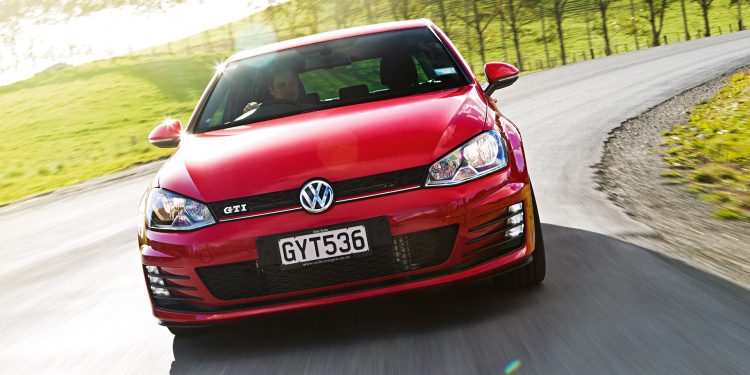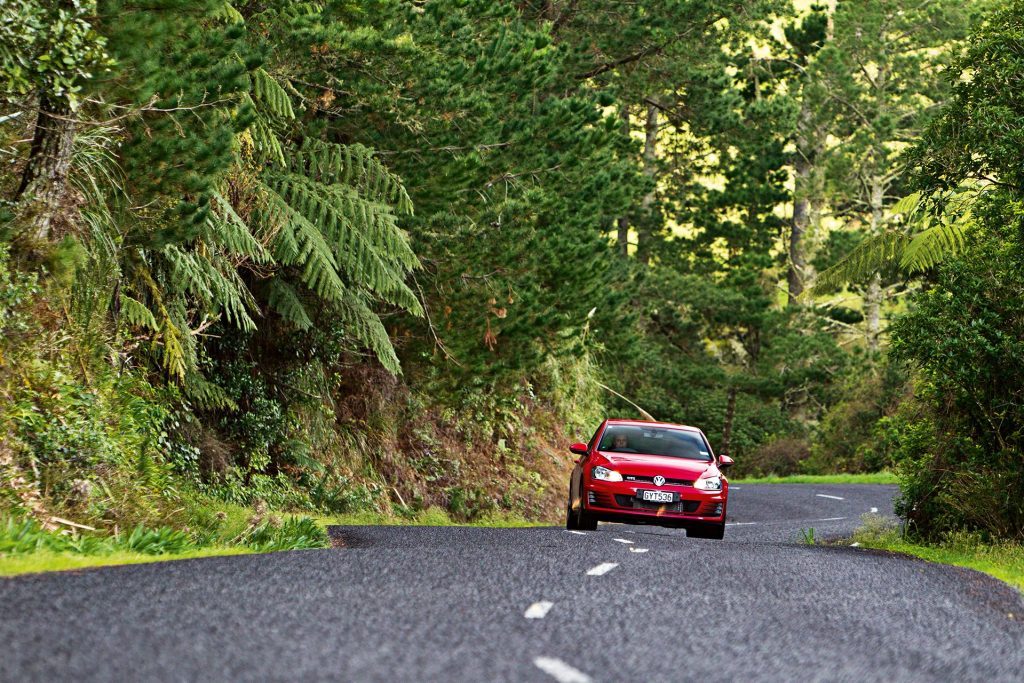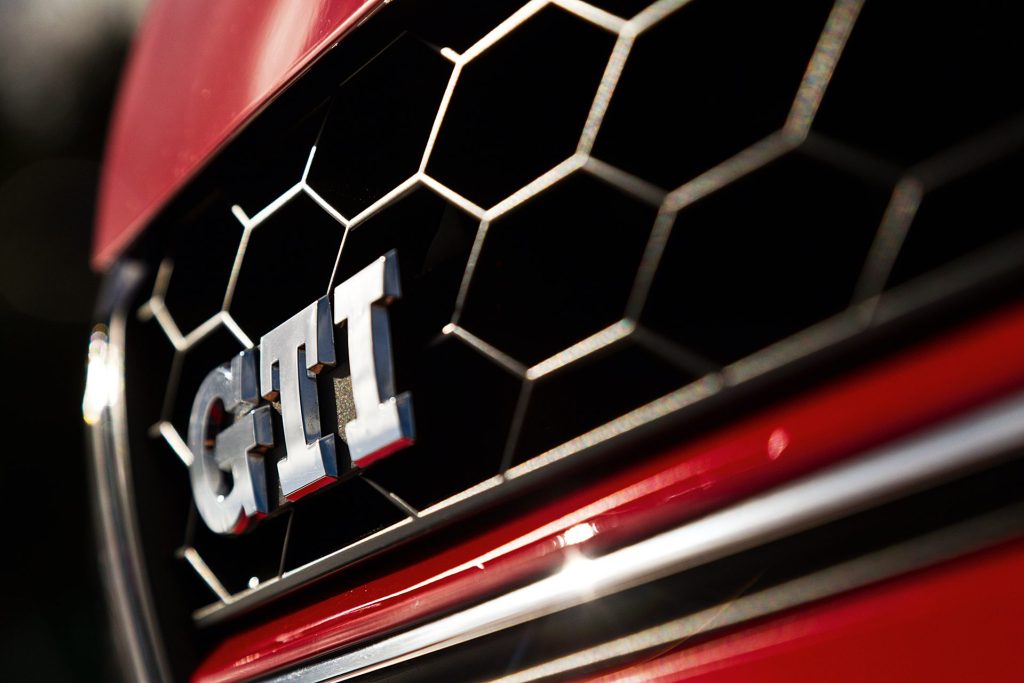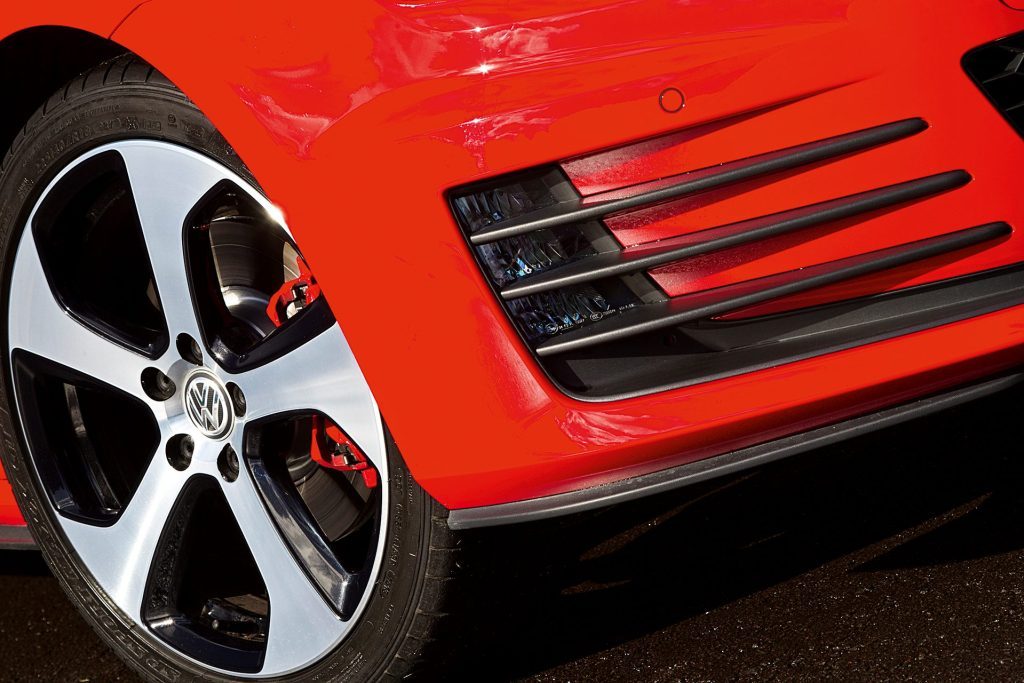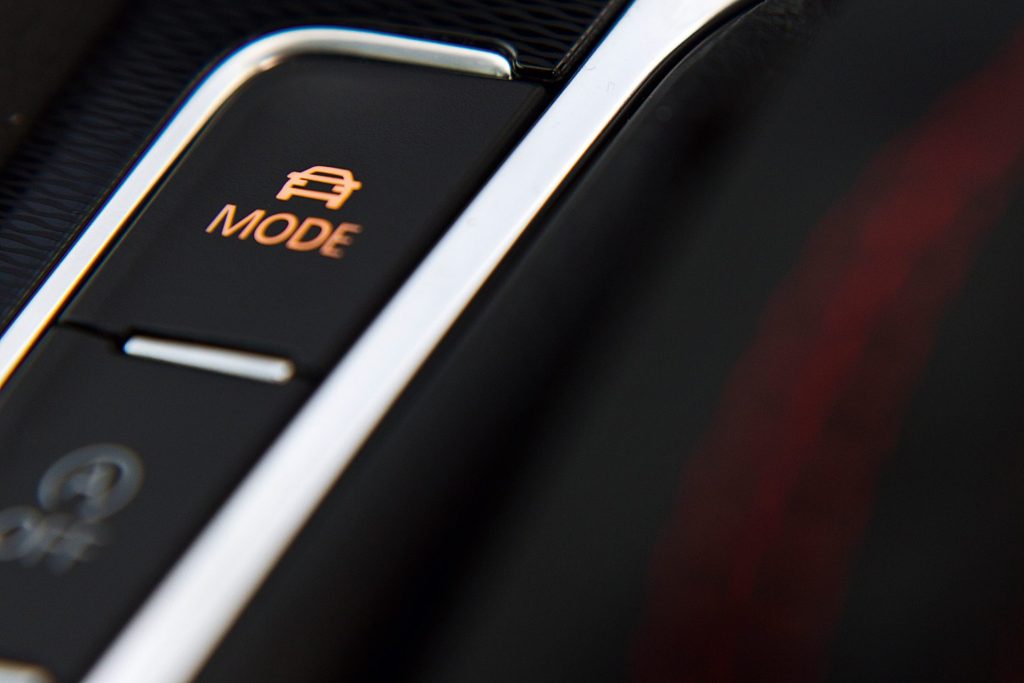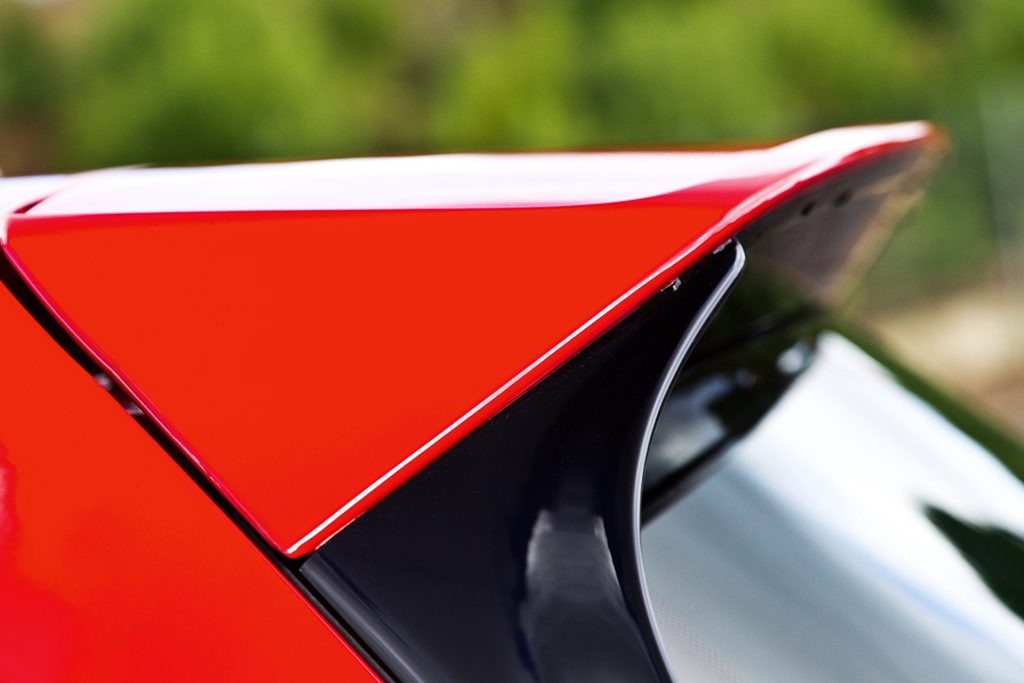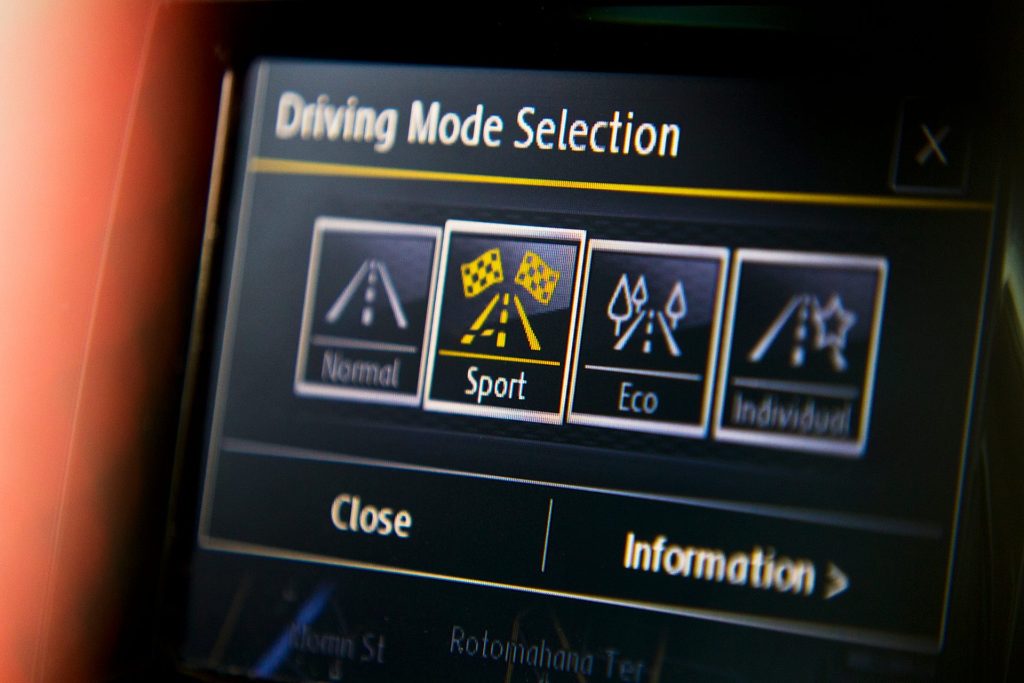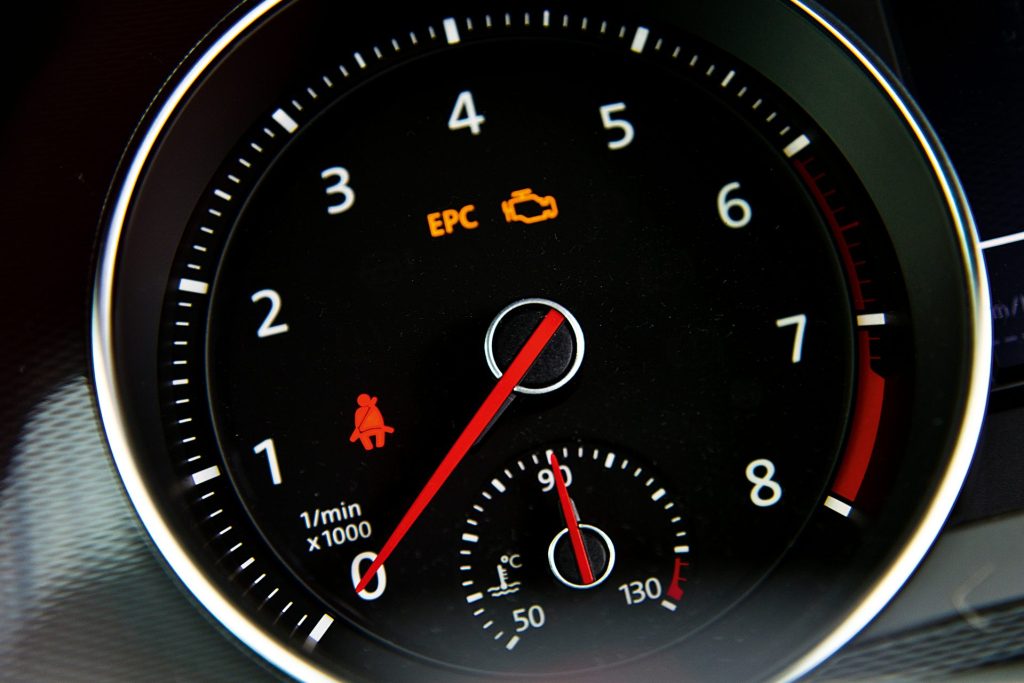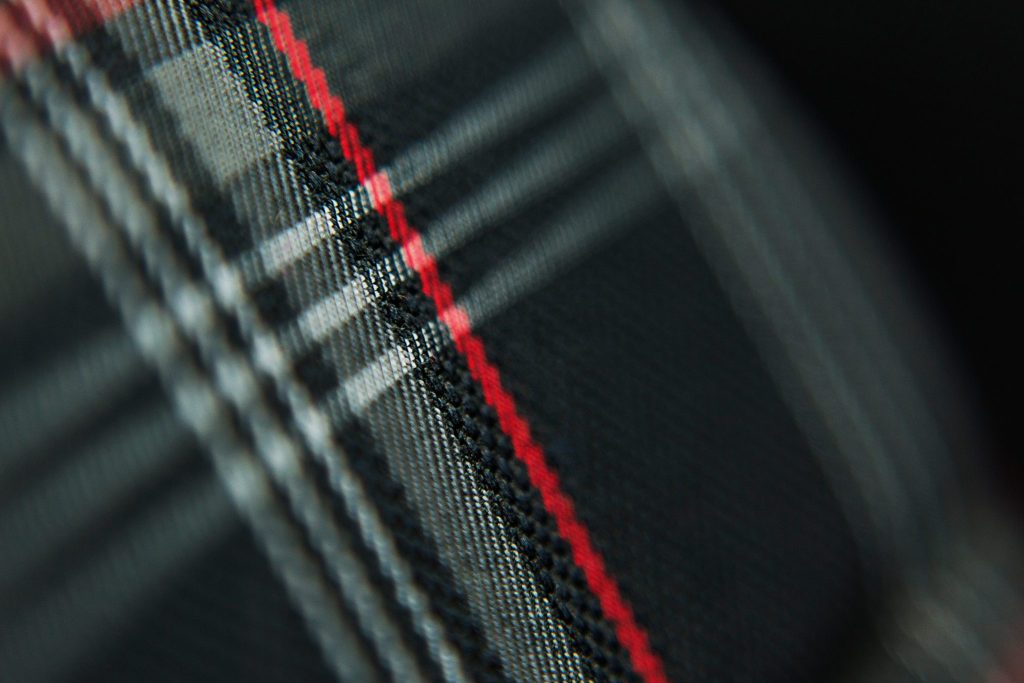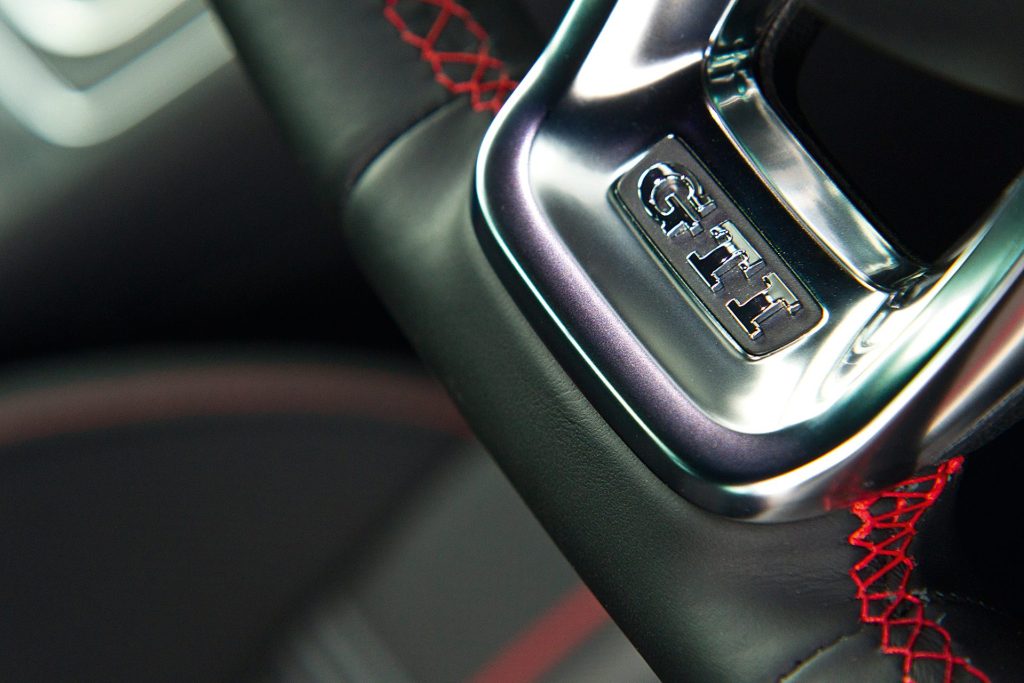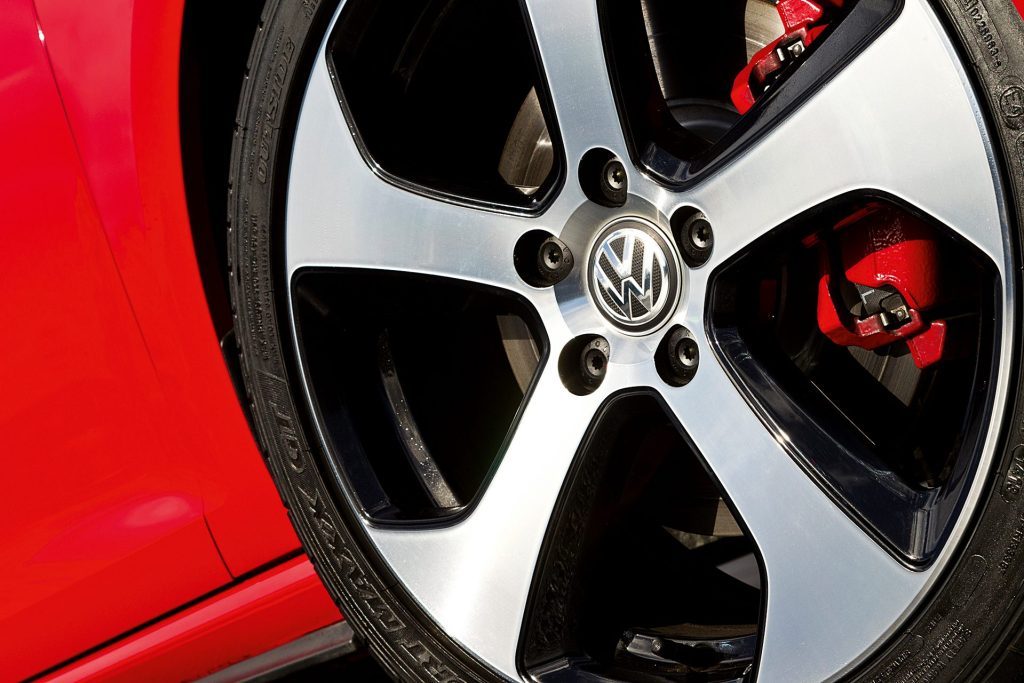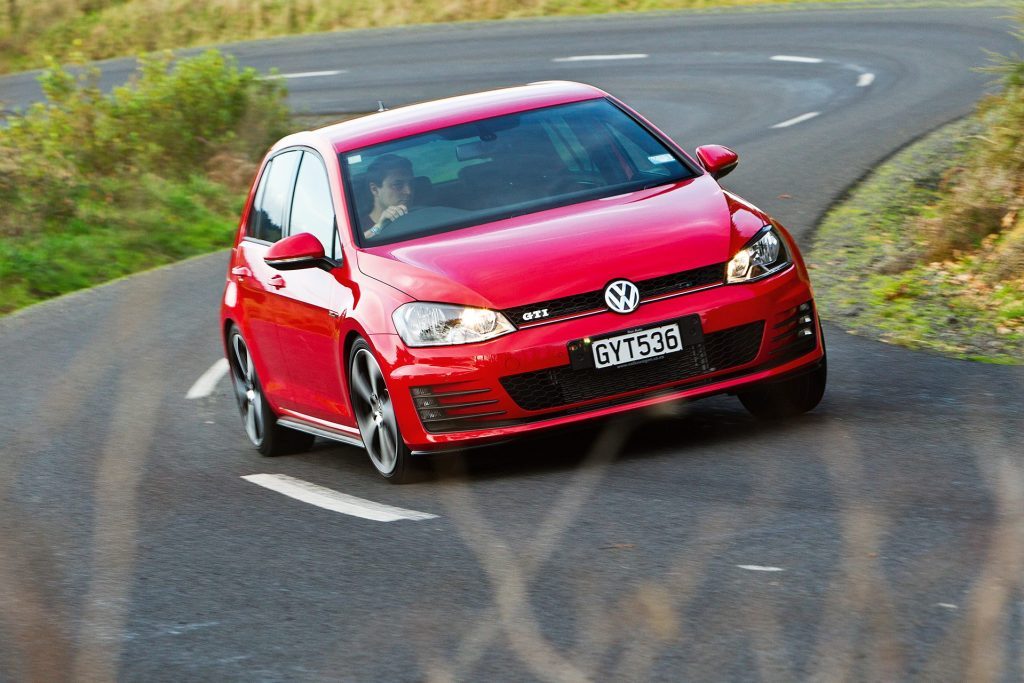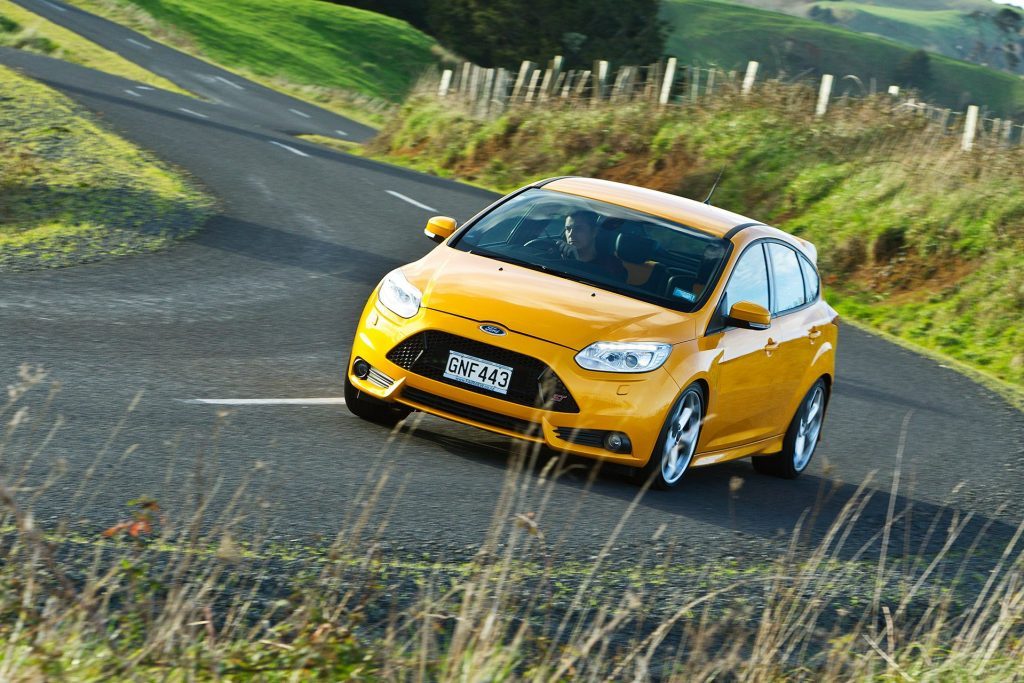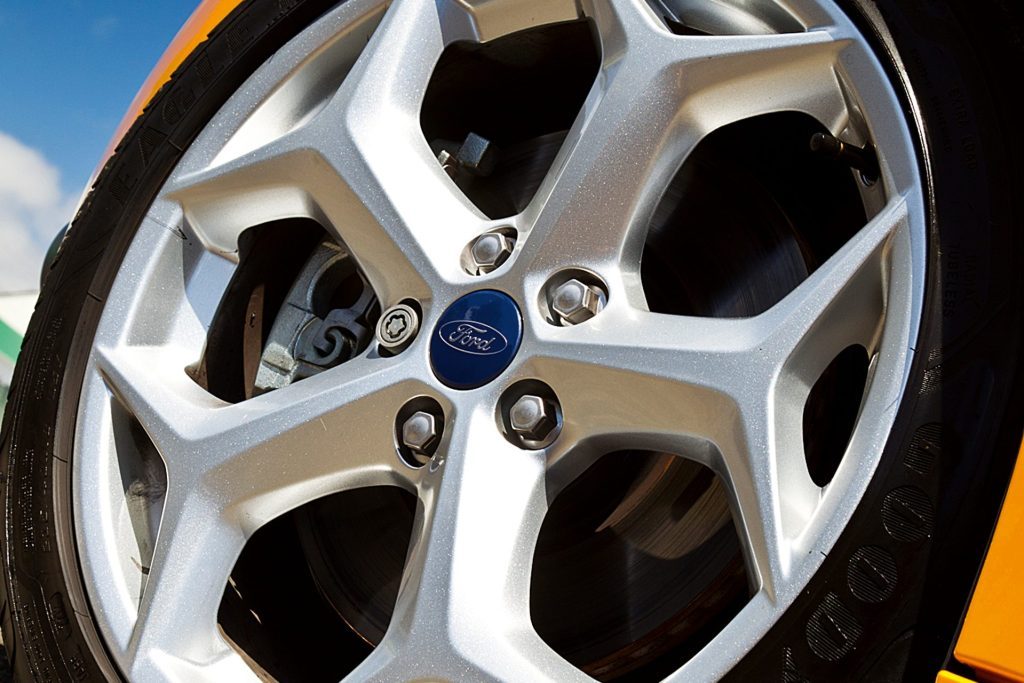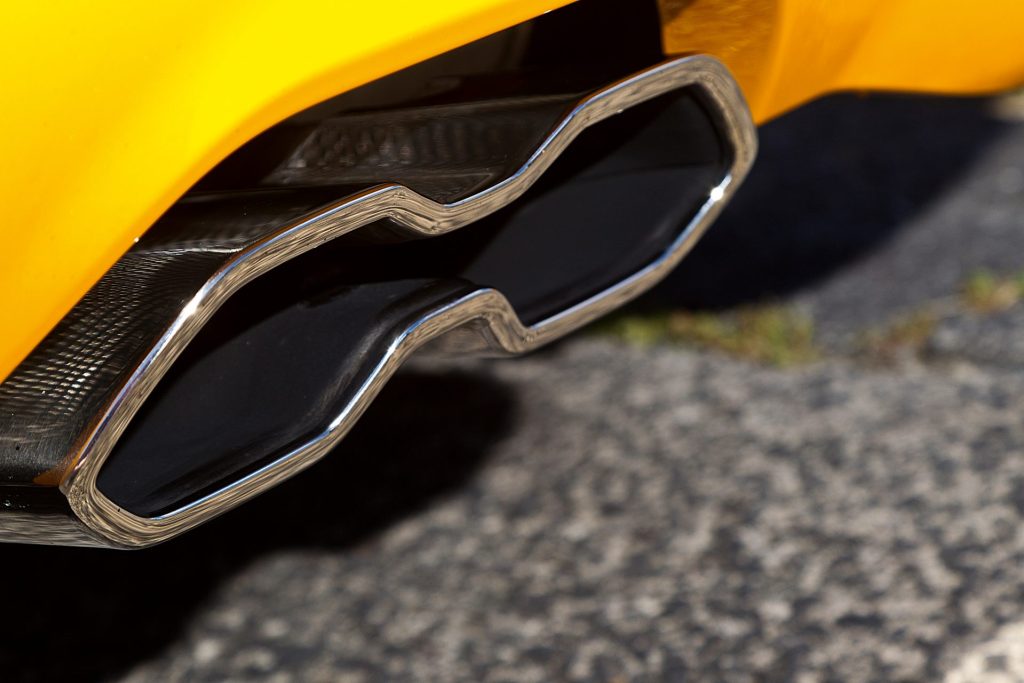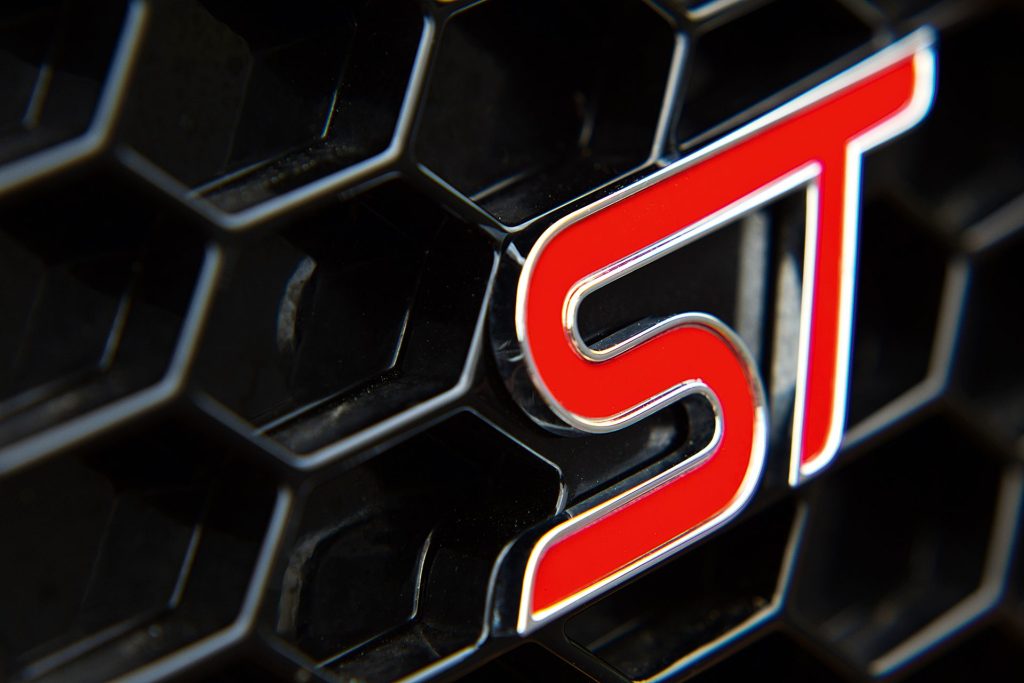2013 VW Golf GTI vs Ford Focus ST comparison
Words: Kyle Cassidy | Photos: Tom Gasnier
The Golf GTI is now in its seventh generation. It’s an all-new but familiar package. Is it still the greatest all rounder?
Since its revival for the new millennium, Volkswagen’s GTI has been the default choice for hot hatch buyers in New Zealand. It may not be the ultimate dynamic demon of the sector, but it’s fast and fun and also practical and stylish.
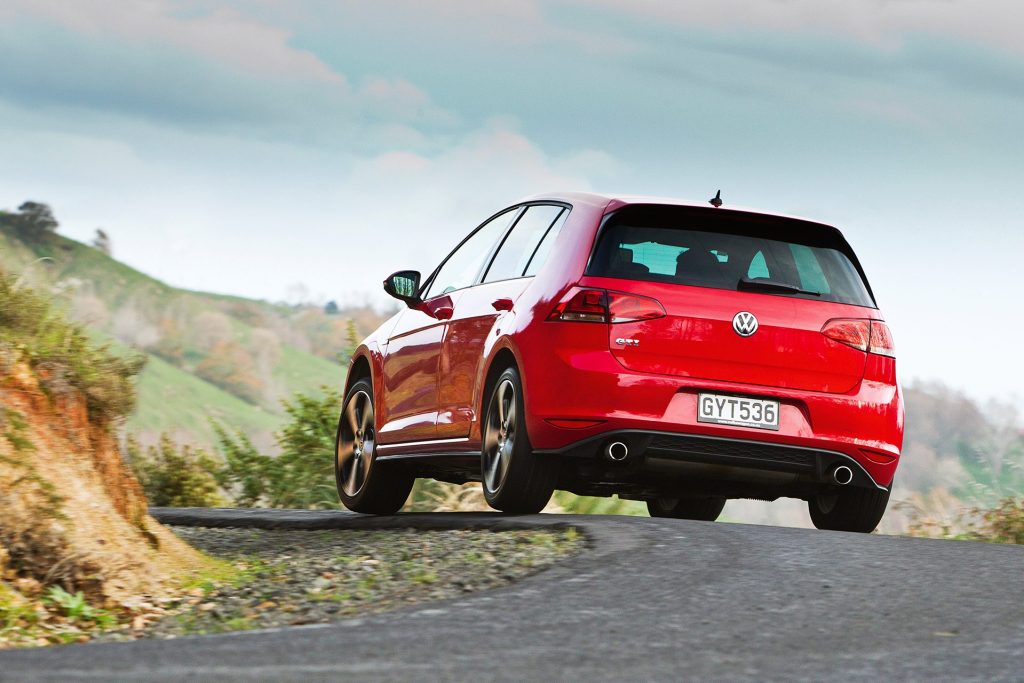
Now in its seventh generation, the new Golf is slightly bigger, roomier and better specified yet it’s lighter, more efficient and cheaper. The exception to that is the GTI, which has gone up a grand to $59,750. It is, however, about the only real negative of the new car.
For it makes gains on both the performance and economy fronts with this new engine. A development of the previous unit, it has a new cylinder head design which incorporates dual injection. Adding port as well as direct injection helps reduce exhaust gas particulates for cleaner, Euro6 compliant emissions. Power is enhanced slightly from 155kW to 162, but torque swells from 280Nm to 350 with a revised turbo. Work’s been done to make sure the GTI doesn’t guzzle juice under full load with dual cam adjustment and variable lift on the exhaust cam. Engine friction has been reduced, which is good for efficiency, while also making the four-pot rev harder and faster. The whole unit is said to be lighter thanks to a thinner crankcase, lighter crankshaft and even a plastic oil pan.
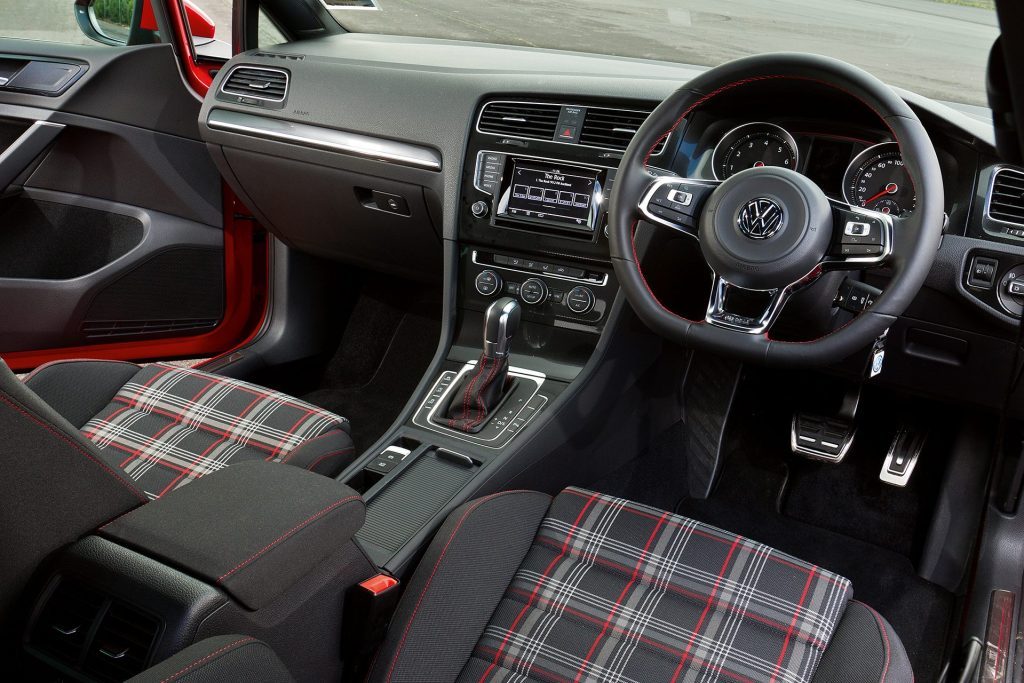
Where the old GTI was rated at 7.6L/100km, this new one is said to be good for 6.4L/100km. To achieve fuel use figures that low, you’ll need to drive in the ‘Economy’ setting, which can be dialled up via the new Driver Preference screen. At worst, we noted consumption around the 12L/100km mark during some pretty enthusiastic pedalling. Not bad, considering.
Thanks to that new torque mountain, VW’s claimed 0-100km/h time of 6.5sec is easily attainable. The traction control sorts the wheelspin while the six-speed twin-clutch gearbox snaps through the changes. VW has advanced the effectiveness of its traction aids further with the new GTI. The ‘XDS’ stability system has been re-programmed to not only nip away at the inside front wheel to help quell wheelspin in the corners, but also the rear as well to help the GTI round up bends more effectively.
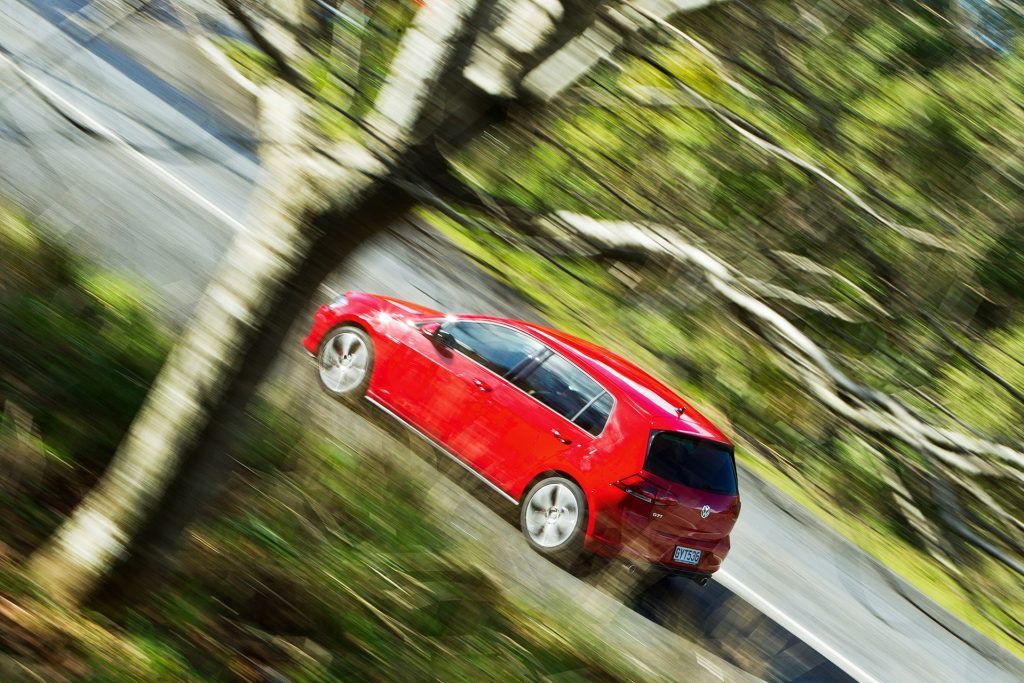
The ESP system also incorporates a new sport mode, with more relaxed tolerances. It’s worth pushing if you’re pushing on. The steering has been honed too with the addition of a new variable rack.
VW calls it Progressive Steering and it takes the arm work out of turns, both in the car park and at speed as there are just 2.1 turns lock to lock. As you turn further away from centre, the steering becomes quicker due to the variation in tooth spacing on the rack. With all these components at your disposal, it makes the GTI a very easy car to drive briskly.
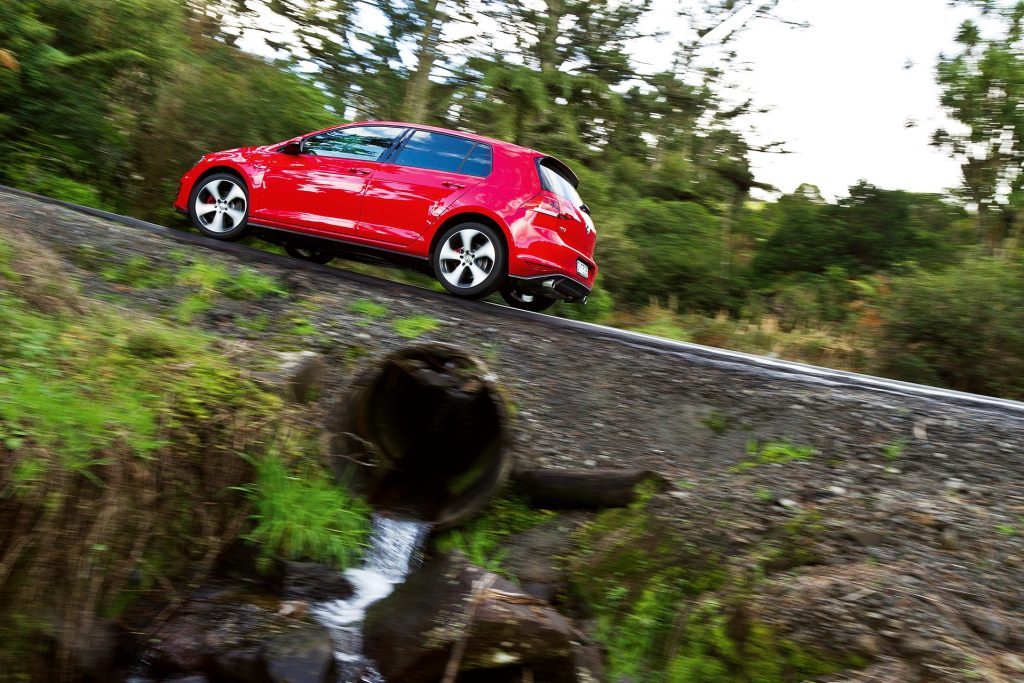
Adaptive dampers are again on the options menu, with three ride settings, and these are said to come with improved response times to improve ride and handling. This $2000 option might be worth ticking if you find the low speed jiggle too much of a niggle around town.
While on the topic of suspension, the GTI has the same mac strut style on the front but there’s a new lower wishbone support to improve the steering and a sturdier sub frame to keep things stable under duress. The suspension is lighter too, as is the rear set-up, which has been redesigned to reduce side to side movements, making the car feel more stable on the go.
With the Golf’s slightly larger dimensions, the GTI’s practicality grows too. There’s a bit more leg room in the rear, while both front and rear passengers enjoy the increase in the cabin width. Boot space is up 30L to 380. There’s more adjustability for taller drivers at the wheel and while the sport seat offers a little more support than the regular pew, it’s far from hugging, and the tartan cloth trim remains. The GTI wheel gets paddle shifters too, which could be bigger.
So how does it feel on the fly? What better way to find out than by comparing it to the fast and furious Focus ST.
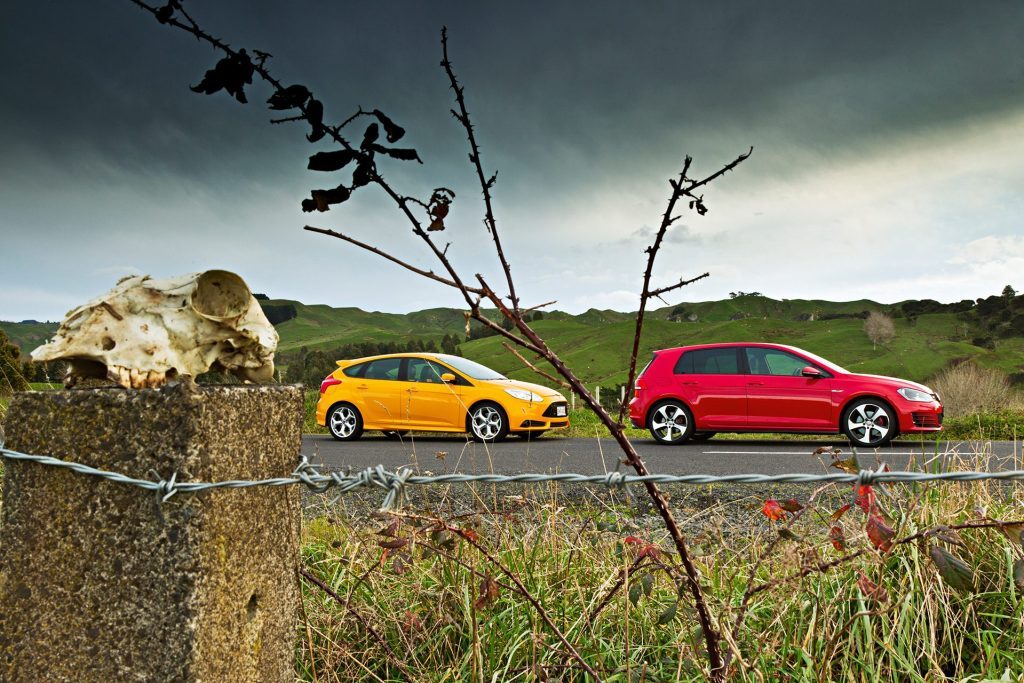
Both these Euro-engineered cars do the hot hatch thing well being fast to look at and drive, yet easy enough to live with day in, day out. Body kits and bigger alloys set them apart from the more mundane models. The GTI is a more conservative approach, which is another of the reasons it sells well here.
Both use a 2.0 litre, DI turbopetrol to get moving, the Ford’s delivering a stronger 184kW but a similar 360Nm of torque. Thanks to a slight weight advantage and an automated launch system, the GTI is quicker off the mark, where the ST requires a racer’s touch to balance clutch and throttle to nail a quick get away. Once everything is hooked up, these two are all but neck and neck down short straights, but give the ST a chance to stretch its legs, and it will pull a few lengths on the GTI thanks to its stronger top end. Both sound interesting with the taps opened, particularly the GTI. There’s plenty of induction and valve train melody there.
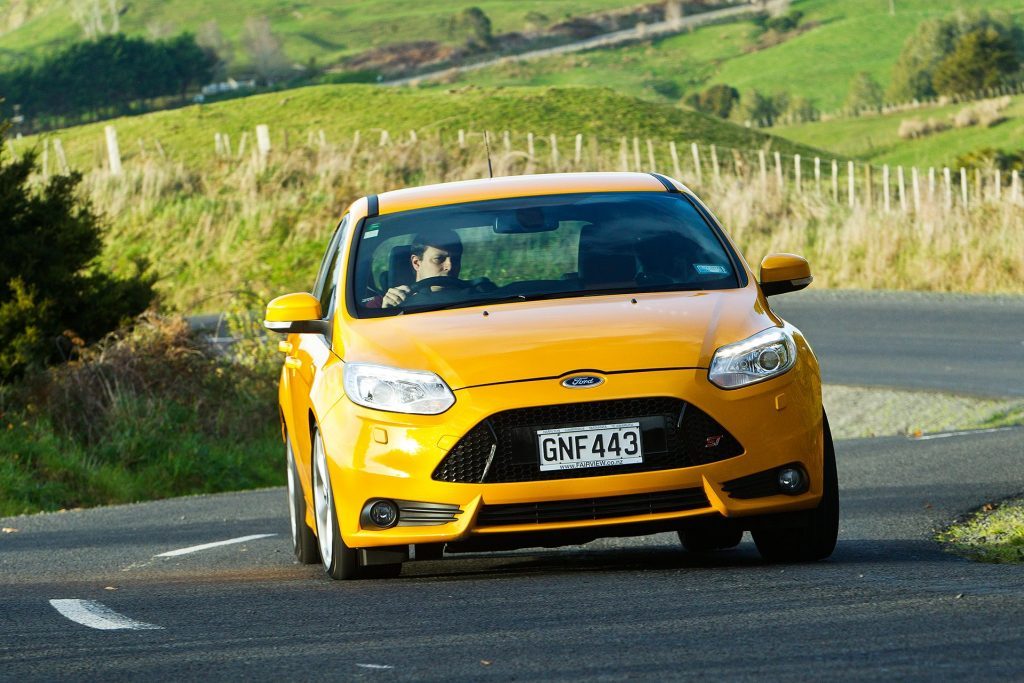
Sporting springs that put a slight edge on the ride at town speeds come into their own at speed. Both deal to bumps adequately while keeping the mass on an even level. The Ford however is a notch above the GTI when running hot. It too has quick steering, but has a better weighting and more feedback, giving it more accuracy and allowing you to carve more consistent arcs through the curves. The ST’s front end really digs itself into a bend, and if you manage to push it hard enough, you’ll feel the rear-end lending a hand to help tuck the nose in even tighter. The Golf can slice its way across the countryside rapidly but when upping the ante, can require the odd mid-corner adjustment. It’s steering is a little lighter on feel, and so you can’t always place it quite as accurately as the ST. The GTI feels lighter on its feet, and carries less weight on its front axle but the ST’s wider tyres and track dimensions see it hold more corner speed. Both use electronic aids to keep the torque in line and traction hooked up, but with its extra power, the ST’s more feelsome helm also lets more gremlins through. The GTI’s wheel exhibits no tugging or pulling and even when powering out of a greasy corner, the electronics smooth out the power delivery to keep proceedings civilised. The gearbox is what defines these two, however. The clutch pedal and gearlever add to the more driver focused experience in the ST, one that is becoming ever more rare. On the other hand, the GTI’s automated twin-clutch makes covering ground less taxing and helps it keep up with the fast-charging Ford. It’s quick shifting and eliminates any fluffed shifts, especially before entering a bend. It’s also mucho convenient in traffic too, while helping reduce consumption.
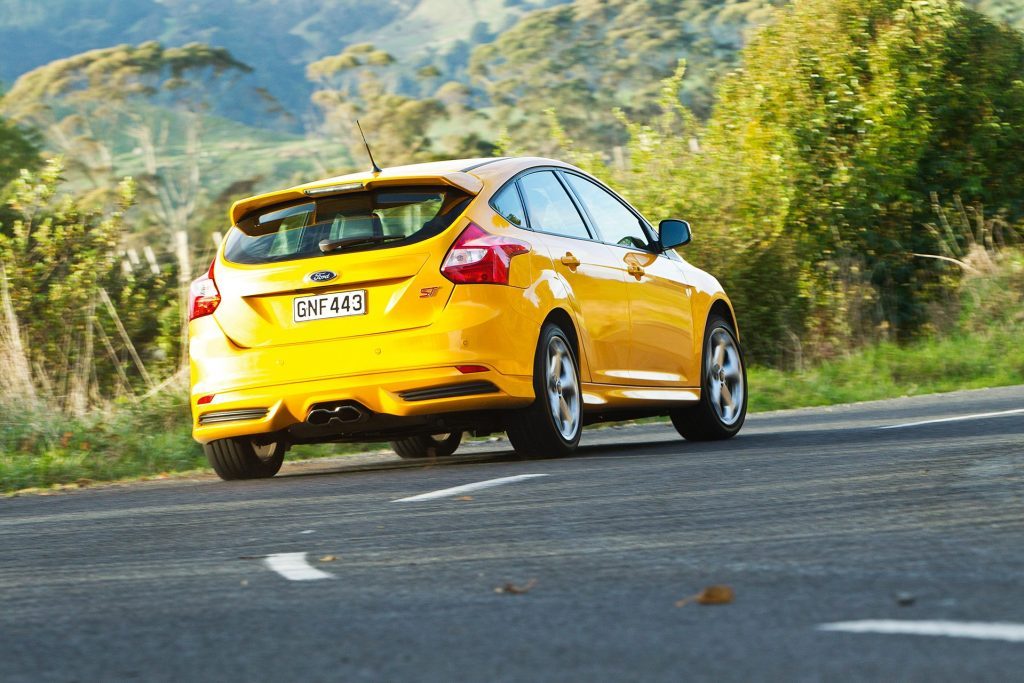
These cars are pretty evenly matched on spec, the $52,840 ST seemingly ahead of the GTI on value given a proximity key and adaptive xenons are standard on the Ford, but would add $4250 to the $59k GTI. The Ford lacks one convenience item however, the option of an automatic box. The added drive comfort and convenience of the twin-clutch auto is what has made the GTI such a sales success here. Many will find the Focus ST too focused for everyday life. It has its nose ahead on the dynamic front, but when you take in to account the GTI’s better refinement, build, and overall quality, you’ll see why this VW will outsell the ST. Those heavily bolstered Recaro seats in the ST are a blessing in bends, less so when having to clamber out of them every day. The ST’s turning circle is a problem too. The infotainment display and functionality is superior in the GTI, so too the trip computer along with some of the other little things that make the Golf annoyingly good.
In the end, this comes down to what you want; a more involving bend merchant with a clutch pedal, or a more livable and convenient great all-round performer.
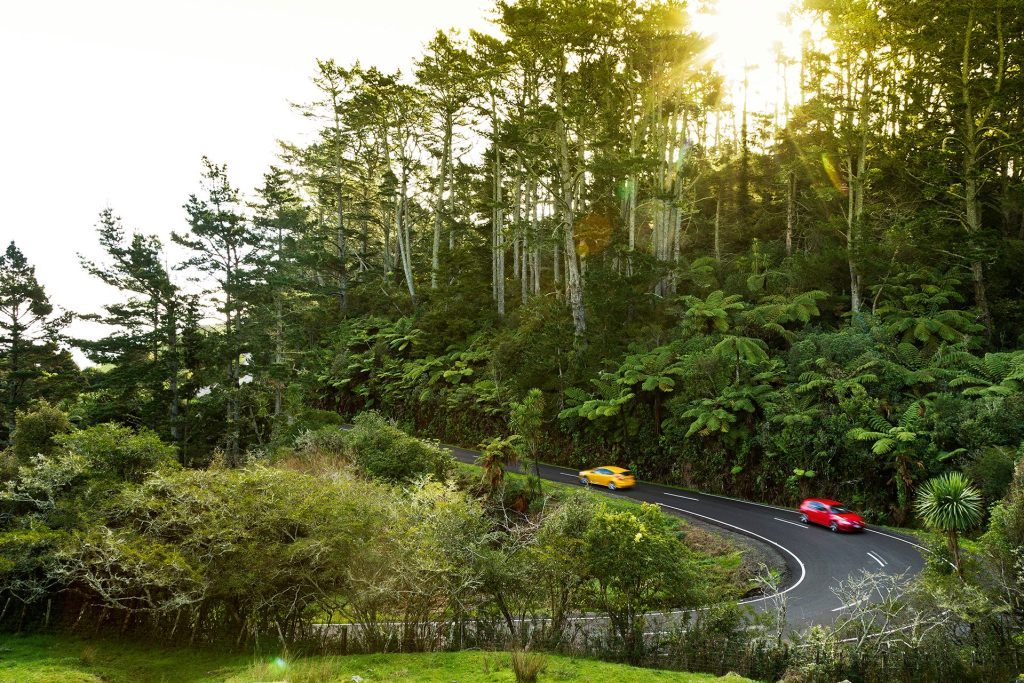
| Model | VW Golf GTI |
| Price | $59,750 |
| Engine | 1984cc, IL4, T, DI |
| Power | 162kW/350Nm |
| Drivetrain | 6-speed twin clutch, FWD |
| Fuel Use | 6.4L/100km |
| C02 Output | 139g/km |
| 0-100km/h | 6.39sec |
| Weight | 1387kg |
| Model | Ford Focus ST |
| Price | $52,490 |
| Engine | 1999cc, IL4, T, DI |
| Power | 184kW/360Nm |
| Drivetrain | 6-speed manual, FWD |
| Fuel Use | 7.2L/100km |
| C02 Output | 172g/km |
| 0-100km/h | 6.68sec |
| Weight | 1437kg |


